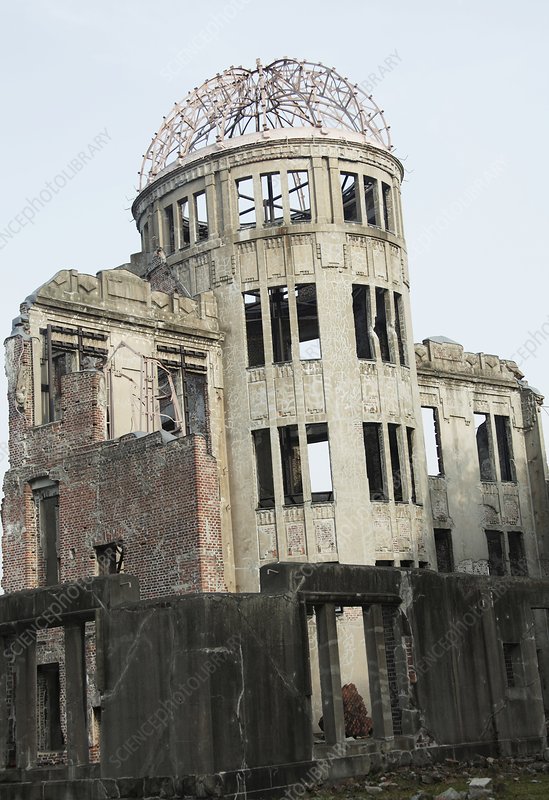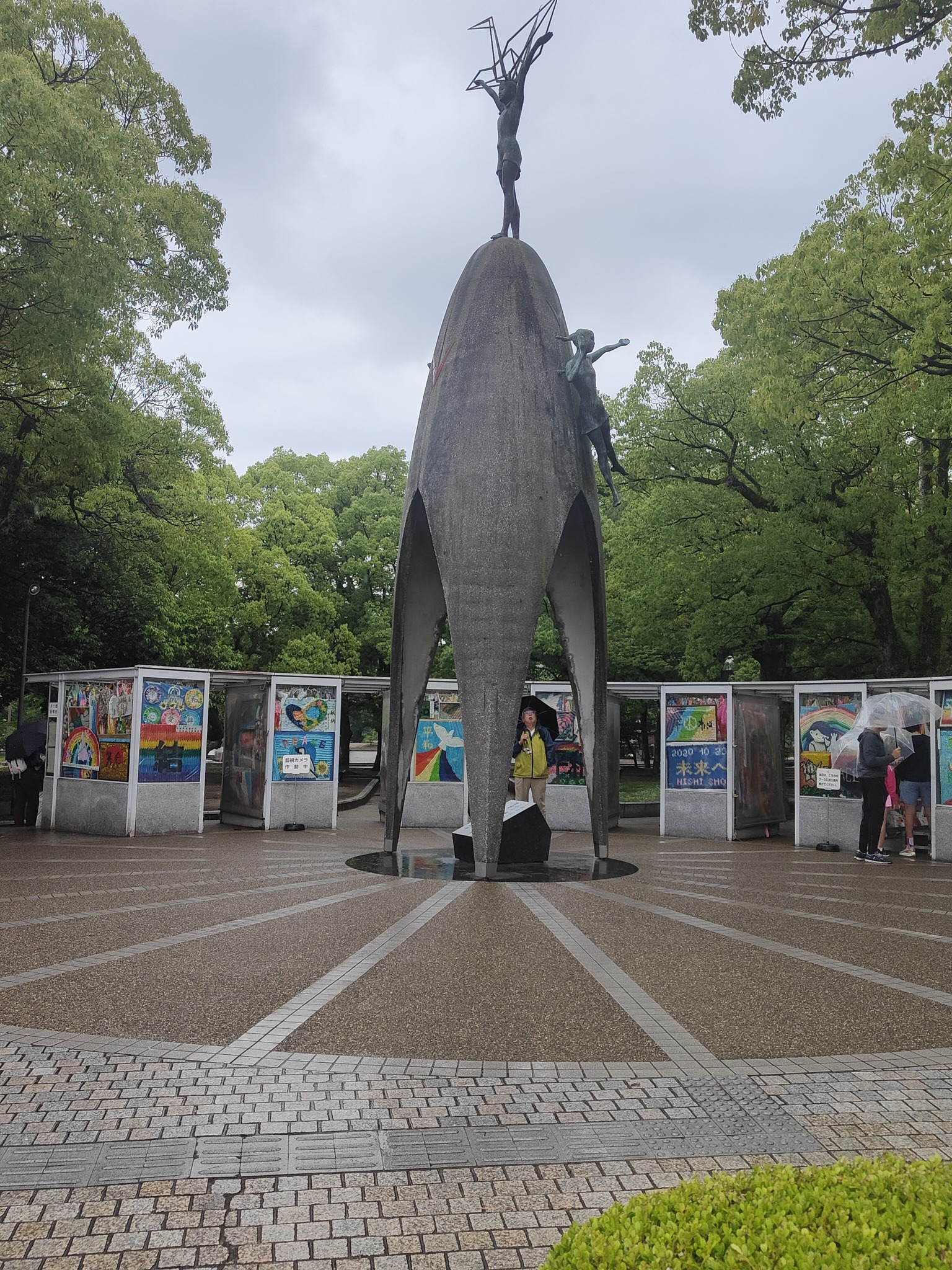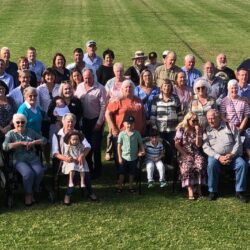HAFS Member John BS Hungerford (Jack) [B.3a.4b.1c] recently spent an enjoyable visit to Japan and, while there, visited the Hiroshima Peace Memorial Park. His reflections on that visit are quite moving. More information on the Memorial Park can be found at https://en.wikipedia.org/wiki/Hiroshima_Peace_Memorial_Park.
It is near 78 years since the morning of 6 August 1945 when the Allied Forces dropped an atomic bomb on the Japanese city of Hiroshima.
It was devastation by a weapon of mass destruction.
Its purpose was to convey a message to the rulers and military protagonists of the Japanese nation that should they persist with their fanatical insistence in prolonging the war, which they were losing, with massive casualties being inflicted to both sides in interpersonal combat, invoking the ideology of the Shogun dictators of the past and that the Japanese people would emulate the characteristic’s of past samurai warriors which held bravery, honour, and personal loyalty above life itself.
The message was clear, unambiguous and brutal, “… We have the means the conviction and the resolve to systematically destroy your very existence…only your unconditional surrender will be an acceptable outcome… and this is an example of our resolve.”
It was only after a second atomic bomb was dropped on the city of Nagasaki three days later on 9 August 1945 that the Japanese surrendered.
As the years slide by and other generations emerge, the devastation of the residents of those cities gradually slips from the consciousness of people throughout the world.
My observations during my visit to the Hiroshima Peace Park & Museum showed that it has not slipped from the consciousness of the people of Japan.
Our visit was in the mid- afternoon on an overcast and late rainy day. Most of the comfortable number of visitors to the open spaces of the Hiroshima Peace Park were covered by open umbrellas.
The horticultural staff were beginning to prepare the spacious garden beds for the upcoming Hiroshima Peace Memorial Ceremony to be held on 6 August 2023.
The annual Peace Memorial Ceremony is held in Hiroshima Peace Memorial Park to console the souls of those who were lost due to the atomic bombing, as well as pray for the realisation of everlasting peace.
It was evident that over the 78 years since the devastating bombing, the infrastructure and the natural environment of the City of Hiroshima has revived, regenerated and been restored, and I wondered “… Have the psychological souls of the descendants of the survivors been revived, regenerated and restored?”
There are few remaining reminders of the totality of the devastation, apart from the Hiroshima Prefectural Industrial Promotion Hall, and now commonly called the Genbaku Dome, Atomic Bomb Dome or A-Bomb Dome. The only structure left standing in the area where the first atomic bomb exploded on 6 August 1945.

These only remain in the form of graphic black and white photographic images on display on the walls of the Memorial Museum or on postcards to be purchased in the expansive Museum Souvenir shop, where I queued with around 1000 folk at one of the 20 or so ‘check out’ booths to obtain a bundle of ‘Hiroshima Atomic Bomb Memorial Site pictures.’
The Peace Park is expansive in a near tranquil setting the dominating Atomic Bomb Dome, on the banks of the Motoyasu River and is now surrounded by mature trees at the head of a riverside path leading into the open park hosting memorial statues and plaques.
In this setting of calmness and peace each of the memorial statues and plaques articulated memories of great sadness and loss, such as, “the Children’s Peace Monument (原爆の子の像, Genbaku no Ko no Zō, lit. “Atomic Bomb Children Statue”) is a monument for peace to commemorate Sadako Sasaki and the thousands of child victims of the atomic bombing of Hiroshima.”

Described by Asian studies and Journalism student for ‘Travel Japan’ as being, “…opened to the public on May 5, 1958 (children’s day in Japan) after the sudden passing of Sadako Sasaki, a 12-year-old girl who was exposed to the bomb at the age of 2. Ten years after the bombing, Sadako was diagnosed with leukaemia. Believing in the myth that folding 1,000 paper cranes would grant a wish, Sadako folded cranes even at her sickest with the hope to live. Although Sadako made more than 1,000 cranes, she still passed away just six months after her diagnosis.
After her death, friends and students from Sadako’s school made a national campaign to build a monument in honour of Sadako and all the other child victims of the atomic bomb. The statue is of a girl, presumably Sadako, standing on a pedestal holding a folded crane high above her head. Suspended on the pedestal are two other figures of children symbolising hope. The monument is surrounded by glass cases filled with thousands upon thousands of paper cranes folded by those all around the world who were touched by Sadako’s story.”
At the centre of the Peace Memorial Park is the Cenotaph for the victims of the atomic bomb, planned so that its main features are arranged in a perfect line. Looking through the opening of the Memorial Cenotaph, a visitor can perfectly see the Flame of Peace and A-Bomb Done straight on. The Peace Memorial Museum is lined up on the opposite side of the cenotaph. It is engraved with the words, “Let all the souls here rest in peace, for we shall not repeat the evil.” Inside lay registries which contain the names of all the known victims of the bombing, regardless of nationality.
The combination of inclement weather and time ended the possibility of photographing more aspects of the Peace Park before ‘moving on’ to the Peace Memorial Museum. A place of significance and cultural reckoning in the mind psych of the population of Japan. Visited by 1,126,381 members of the Japanese population in 2022.
CNN travel writers describe the museum as “…mainly displays artefacts that remain from the atomic bombing, in order to convey the harsh reality of the time, and the dangers of nuclear weapons. While the exhibitions may be harrowing for some, the museum offers a balanced and extraordinarily human outlook on the devastation wrought on Hiroshima and why the city was selected as a target.”
They went on to note that “…the hibakusha (Atomic Bomb Survivors) have been important players in Hiroshima’s peace-centric identity since the immediate aftermath of the bombing and an important part of the museum.
“The hibakusha took their anger and suffering, and rather than becoming embittered, they led the fight for nuclear abolition and opposition to war.”
“Though the number of surviving hibakusha is dwindling, the city (through the museum) is making a concerted effort to document their stories on paper and film. In one of the museum’s special exhibits, survivors’ drawings are captured for posterity, depicting the memories that individuals across Japan still hold of the day that changed their country forever. “
We joined the several thousand Japanese and other foreign visitors in the flow of humanity through the museum. Family groups, School groups, tourist groups following their tour leaders flags.
The Museum displays are confronting, but for me the first and most intellectual confrontation was from a black & white CG (Computer Generated) model recreation of the minutes city scape as the streets transformed from a normal peaceful morning scene, buildings, houses, vehicles on the road, children on their way to school, women pushing prams, pedestrians rushing to work… suddenly engulfed in a massive cloud followed by booming sound and as the cloud clears – devastation, emptiness, no existence. All in a period of less than five minutes. A city destroyed, over 100,000 people dead. An image in one display of a dead man’s shadow, all that remains of his existence.

The museum is filled with the images and artefacts of the aftermath of the bomb.
I stopped in one room to listen to a video interview featuring the life and family losses of one of the hibakusha (survivors), to harrowing to repeat, yet told with graciousness.
However, for me, the most compelling was observing the reactions of visitors, in particular the small family groups. Watching as parents in small huddled groups comforted and consoled their children. Grieving the loss of a great grandparents, Uncles & Aunts never met, relatives who died of leukaemia?
They were the age of the grandchildren, great grandchildren nieces and nephews of myself and Dear Fay. They were our family, huddled, grieving.
It gave answer to my wonder that natural environment of the City of Hiroshima may have been revived, regenerated and been restored, the psychological souls of the descendants of the survivors perhaps may never be.
Though there were many images to photograph in the museum, I felt it appropriate to take none.
It was time to return to the Hiroshima train station for a contemplative return journey on the bullet train to Osaka.



